Curiosity may do bad things to our beloved furry feline friends but in performance management, we cherish it! Asking the right questions isn’t just an important part of employee engagement questionnaires.
It is also a great way to let your team know that you are interested and invested in their progress and performance. While there are many incredible employee engagement tools available to mainstream audiences, employee engagement surveys really are head and shoulders above the pack.
When creating your own employee engagement questionnaire, there are many areas you need to cover such as communication, workplace culture, rewards and recognition, and work environment. Don’t fret dear reader, we have your back! Here are 20 questions you need to include in your employee engagement questionnaires.
Before we start! If you’re planning to conduct an employee engagement survey, chances are that you’ll be analyzing the results of one too! So why don’t you pop this one open on another tab and save it for a rainy day: How to Analyze Employee Pulse Survey Results.
Table of Contents
20 Employee Engagement Questionnaire Questions
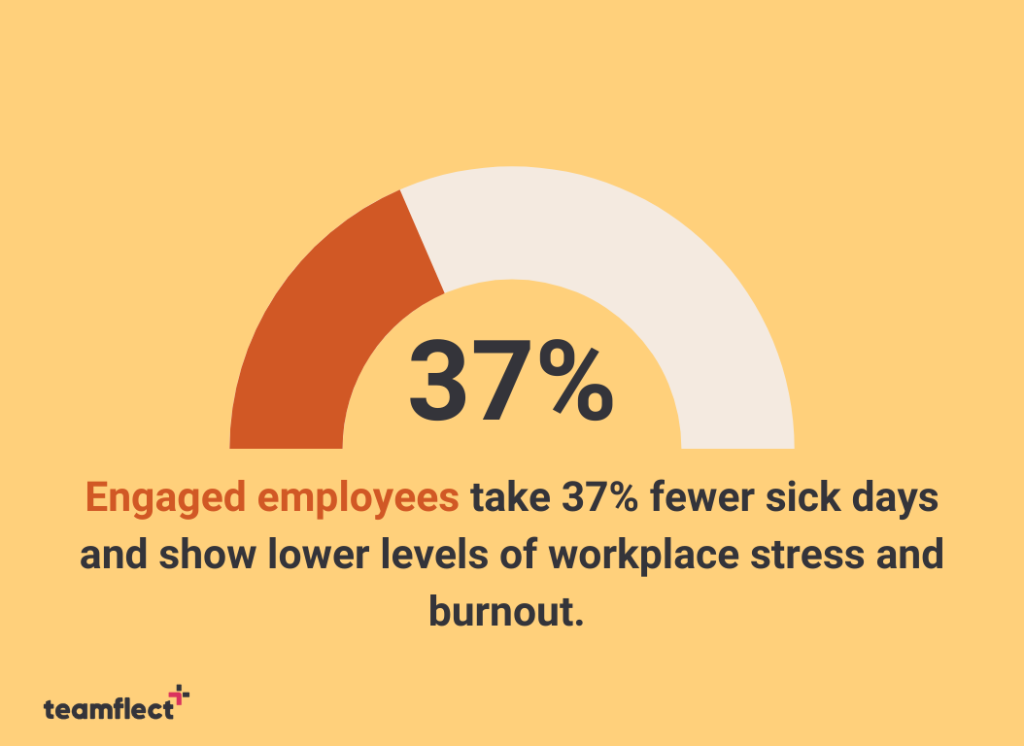
A. Basic Employee Engagement Survey Questions
When it comes to creating an employee engagement questionnaire, it’s important to start with the basics. These questions are the bread and butter of any employee pulse survey. While they may seem straightforward, they provide important insights into the overall satisfaction of your employees.
Plus, they’re the perfect icebreaker questions to get your team talking about what they love (and maybe don’t love so much) about their job. So, grab your pen and paper, it’s time to get down to business!
1. Are you satisfied with your job?
2. How would you rate your relationship with your immediate supervisor?
3. Do you feel valued and appreciated by your organization?
4. Do you feel motivated to come to work each day?
B. Questions about Work Environment
Now that we’ve covered the basics, it’s time to dive a little deeper. The work environment plays a crucial role in employee satisfaction and can greatly impact productivity and collaboration. That is why you have to include it in your employee engagement questionnaire
These employee engagement survey questions will give you insights into the conditions under which your team works, and whether or not they feel supported and equipped to do their job well. And hey, who knows, maybe you’ll even get some tips on how to create the perfect office playlist!
5. Do you have the resources you need to do your job well?
6. Do you feel comfortable giving feedback to your supervisor?
7. Does your work environment support collaboration and teamwork?
8. Do you have access to training and development opportunities?
C. Questions about Communication

Clear and effective communication is essential to any successful team. It’s important to not only communicate effectively but to also actively listen and take action based on the feedback received.
If you really think about it, an employee engagement questionnaire is just a streamlined way for you to listen to a large group of employees at the same time.
These employee engagement questionnaire questions will help you assess how well your company is doing in terms of communication, and provide insights into what changes can be made to improve communication and foster a more collaborative work environment.
9. How often do you receive feedback on your work?
10. Do you feel like you have a say in decision-making processes?
11. Is communication within your team effective?
12. Do you feel like you are kept informed about company news and updates?
D. Questions about Recognition and Rewards
Who doesn’t love a good pat on the back or a free lunch? That right there is an attitude towards employee recognition that we absolutely despise. That attitude does not belong in your employee engagement questionnaire!
A culture of recognition or a culture of empowerment isn’t as simple as pats on the back or pizza parties. It is about true appreciation and fair compensation!
The employee engagement questionnaire questions we listed here are designed to you assess how well your company is doing in terms of recognizing and rewarding employees, and provide insights into what changes can be made to improve employee satisfaction and retention.
13. Do you feel like your achievements are recognized and rewarded?
14. Do you feel like your compensation is fair and competitive?
15. Are there opportunities for growth and advancement within the organization?
16. Do you feel like you are given enough autonomy in your role?
E. Questions about Company Culture
Company culture is the intangible yet ever-present force that shapes the workplace experience. It’s the set of shared values, beliefs, and practices that make each company unique.
Your company culture plays a massive part in whether you have engaged or disengaged employees. So, it should be a key part of your employee engagement questionnaire as well!
The employee engagement survey questions we listed below here will help you gauge just how well your company is doing in terms of building a positive and engaging company culture.
17. Do you feel like your organization’s values align with your own?
18. Do you feel like diversity and inclusion are valued in your organization?
19. Does your organization prioritize work-life balance?
20. Do you feel like your organization is committed to making a positive impact on society?
How to conduct an employee engagement survey in through Microsoft Teams?
There are plenty of incredible engagement survey tools available that can let you conduct engagement questionnaires online. In fact, we have a complete list of some of the best tools you can use for engagement surveys right here: Top Pulse Survey Software!
Step 1: Integrate Engagement Survey Software into Microsoft Teams
That being said, the key to having your engagement questionnaires achieve a high answer rate is to use a survey tool that is integrated into your main communication platform.
The best option for Microsoft Teams or Outlook users has to be Teamflect:
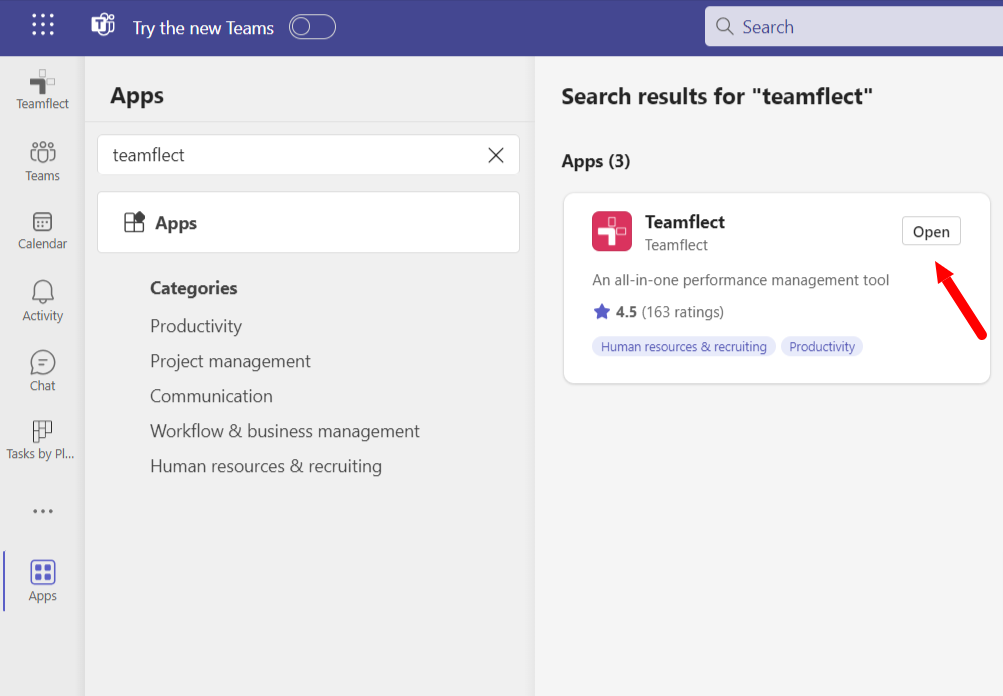
To implement Teamflect’s engagement survey software, all you have to do is head over to the app store and integrate the app. Since Teamflect doesn’t need you to sign up, you can do this at any time with ease.
Step 2: Head over to the surveys module
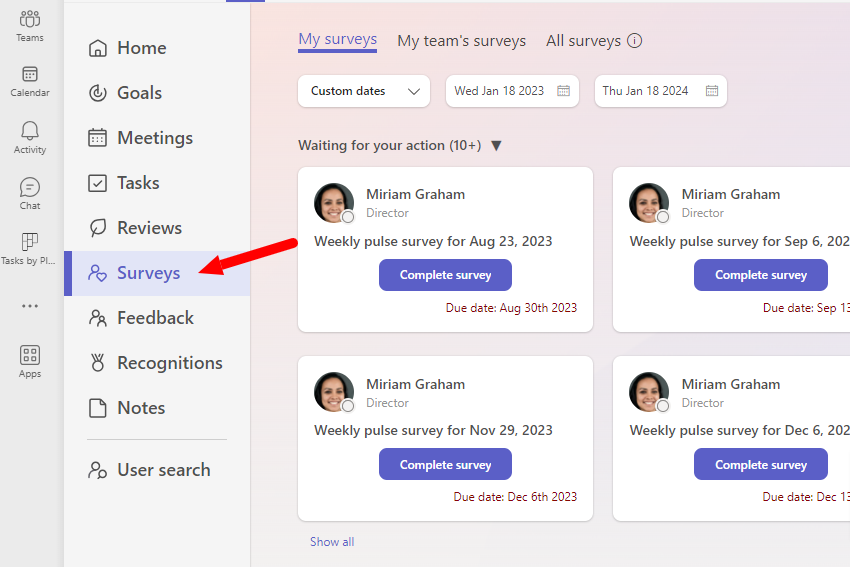
Then all you have to do is head over to Teamflect’s Surveys module. This is where you can start a new survey. It also serves as a hub and archive for all your previous engagement questionnaires.
Step 3: Select a survey template and respondents
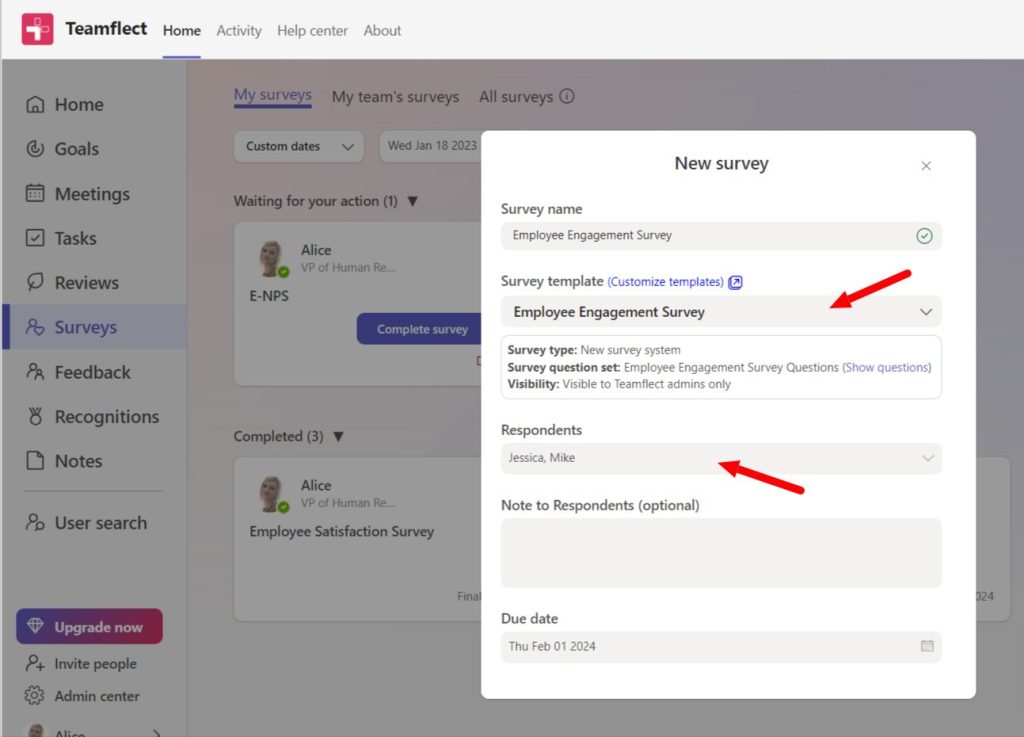
Teamflect has an extensive library of customizable employee engagement survey templates for you to choose from. Whether you are conducting a simple engagement questionnaire or an employee net promoter score survey, you can pick the right template for you and send it away!
You also have the option to automate templates at any interval of your choosing and completely eliminate the manual process.
Step 4:Your team fills out the engagement questionnaire
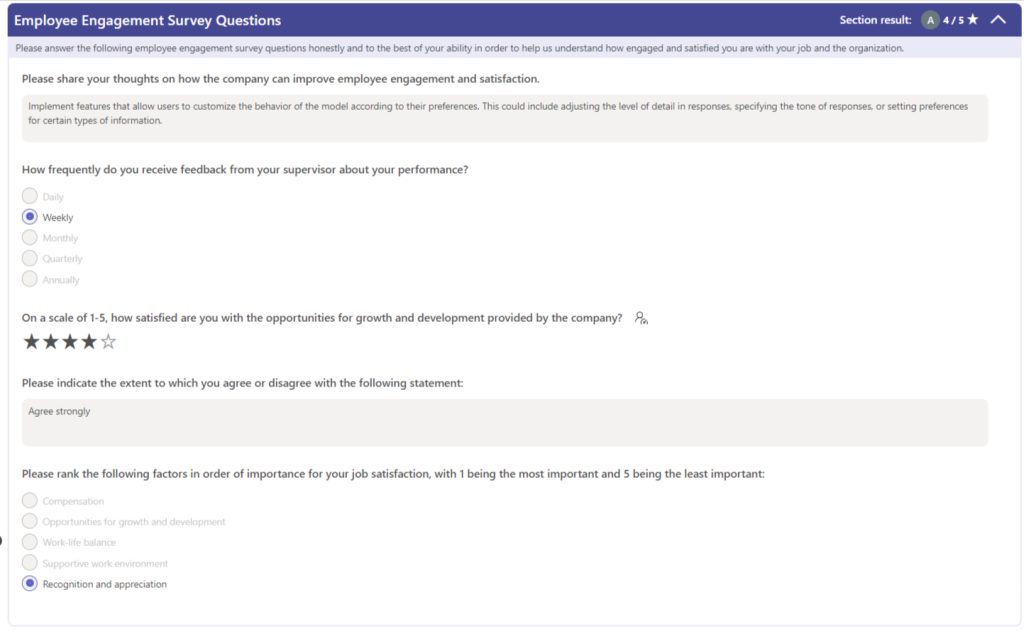
The next step would be for your team to actually complete their engagement surveys. These surveys have the option to include multiple different question types for easy analysis and they can be filled out quickly inside Microsoft Teams chat as well as Outlook.
Bonus: Don’t Forget To Analyze
Once your surveys are complete you need some detailed direct reports and analysis on your survey results. If you have large teams this could take some time. That is why we recommend using Teamflect’s detailed Power BI reports. You can also use AI to not only summarize survey results and compare them with previous surveys.



